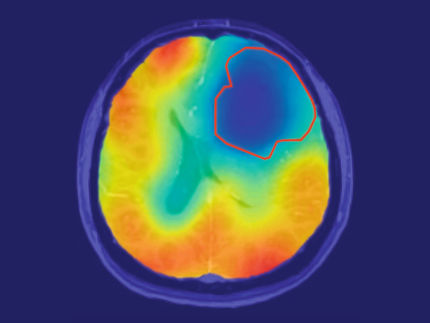Lifelike 3-D cinematic imaging promises numerous medical uses
Newly developed "cinematic rendering" technology can produce photorealistic 3D images from traditional CT and MRI data, with potential applications in medical education, communication with patients and physicians, and early disease detection.
Recently introduced and not currently approved for clinical use, cinematic rendering produces images akin to a photograph of a 3D model. This novel technique, which produces a more lifelike image than can be achieved with standard volume rendering, has the potential to create a new paradigm in virtual anatomic visualization, said one of the article's authors, Dr. U. Joseph Schoepf of the Department of Radiology and Radiological Science at the Medical University of South Carolina.
"Cinematic rendering, a new 3D reconstruction technique, provides a lifelike representation of imaging data and may have potential for enhancing diagnostic utility compared with volume rendering, particularly in terms of a more natural and physically accurate image with improved shape and depth perception," Schoepf said.
The article notes that the new technology is currently limited by the amount of computer power necessary to render truly cinematic 3D images, but the next generation of rendering software and graphics-processing hardware holds great promise.
Applications for cinematic image rendering include surgical planning in several specialties, including thoracic surgery, maxillofacial surgery, and interventional radiology, the article stated. In addition, lifelike, cinematically-rendered images can enhance physician-patient communications and relationships, leading to more informed decisions and possibly improved compliance.
Original publication
Most read news
Original publication
Marwen Eid, Carlo N. De Cecco, John W. Nance, Jr., Damiano Caruso, Moritz H. Albrecht, Adam J. Spandorfer, Domenico De Santis, Akos Varga-Szemes and U. Joseph Schoepf; "Cinematic Rendering in CT: A Novel, Lifelike 3D Visualization Technique"; American J of Radiology; 2017
Topics
Organizations
Other news from the department science

Get the analytics and lab tech industry in your inbox
By submitting this form you agree that LUMITOS AG will send you the newsletter(s) selected above by email. Your data will not be passed on to third parties. Your data will be stored and processed in accordance with our data protection regulations. LUMITOS may contact you by email for the purpose of advertising or market and opinion surveys. You can revoke your consent at any time without giving reasons to LUMITOS AG, Ernst-Augustin-Str. 2, 12489 Berlin, Germany or by e-mail at revoke@lumitos.com with effect for the future. In addition, each email contains a link to unsubscribe from the corresponding newsletter.




















































